In web design, color is far more than a mere decorative element; it's a powerful psychological tool that can significantly impact user experience and decision-making. By understanding the psychology of color in web design, creators can evoke specific emotions, drive conversions, and enhance brand perception.
Colors have the unique ability to communicate messages without words, playing a critical role in how a website is perceived.
Incorporating color psychology into web design involves more than just selecting hues that align with brand identity. It's about creating the right hierarchy, contrast, and balance.
While color psychology can be universal, cultural differences are significant. For example, white symbolizes purity in many Western cultures, but in some Eastern cultures, it's associated with mourning.
The psychology of color in web design is a complex but fascinating study that combines art, science, and cultural studies. By leveraging color strategically, designers can create more engaging, effective, and memorable websites.
Ever thought about what font you were looking at when you’re reading online? If not, the web design company (e.g., people like us) did their job. They choose a font that was easy to read.
Commonly called legibility, this characteristic is important to the success of your website, especially as visitors view your content on anything from a tiny smartphone to a giant monitor. You want to use a font that’s easy to read and unobtrusive.
By contrast, bad fonts are distracting and can chase visitors away from your website — and no one wants that. How can you ensure that your site uses a legible font? Let’s take a look at what makes a font work well online, as well as some great options to consider.
Fonts are the digital files associated with a typeface. A typeface is a special way of rendering letters for use in print and digital media. Typeface designers have been around for centuries. Indeed, some common typefaces still in use today date back to the early days of printing.
Of course, they can’t all be winners, and some typefaces are notoriously hard to read. A good design means that the typeface is pleasing to look at, yet doesn’t call attention to itself. Typical characteristics of a legible typeface include open counters (the space on the inside of the letters), a large x-height (the distance between the baseline and the top of the letters’ bodies), and generous kerning (the space between the letters). That allows the reader to focus on the content, not the way it’s delivered. How the typeface is rendered as a font makes a difference as well. For example, even some of the best typefaces are not legible as 6-point fonts. Legibility, then, also derives from font size, style, and variation (such as italics or boldface).
Looking to develop your own brand? Thrive is a also a top notch web design agency
Legibility should not be confused with readability, which refers to how a designer uses the font on a webpage. For example, having ample white space in your website design is crucial to enhancing the text’s readability. Also, it’s important to have the fonts be of a sufficient size and colors to be easily read on a digital device. There’s a big difference between print media, in which the light is bouncing off the letters, and digital media, in which the light is coming from behind the letters. Good typography takes this difference into account.
Luckily, there are a number of tools available to help designers choose legible online fonts. For example, Quicktools font generator helps you quickly and easily find the perfect font with the right size and color to make sure your text stands out on the page. With this tool, you can easily test out different fonts and color combinations to find one that fits the feel of your project.
For more information about font trends check out this website typography guide and to manage all your fonts check out these font management software.
The designers at Thrive are experts at ensuring that your website is easy to read and keeps your user's attention right where it belongs: on you and your products and services. Here are some of our favorite and easy-to-read fonts to use in our designs.
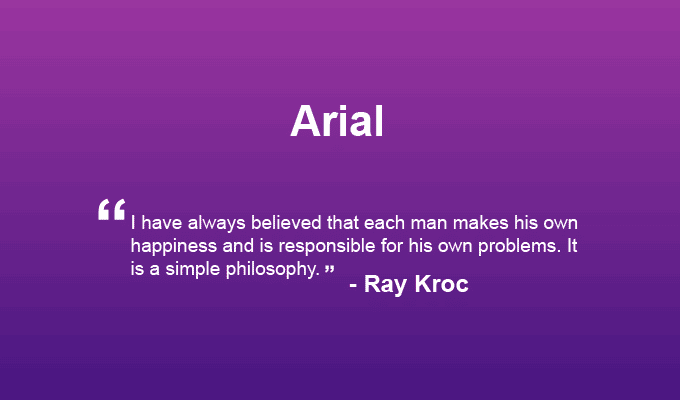
Arial is a popular sans-serif typeface that features natural strokes and open counters to give it a more organic look. Although it is ostensibly a print font, it looks good on web documents as well due to its open design.
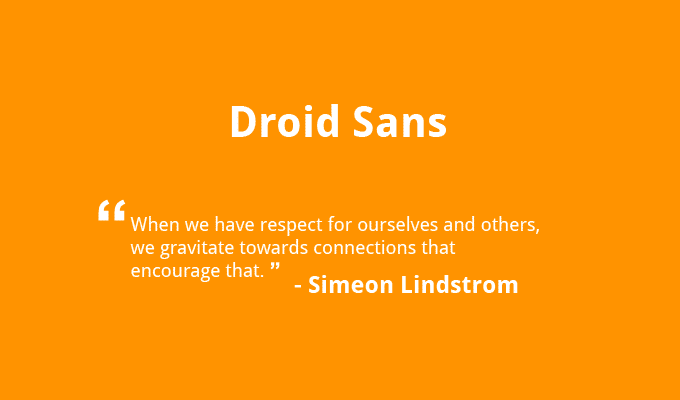
Droid Sans was designed with open counters, tall x-heights, and a sturdy structure to make it highly legible on mobile devices. Like its cousin Open Sans, Droid Sans was designed by Steve Matteson of Ascender Corporation.
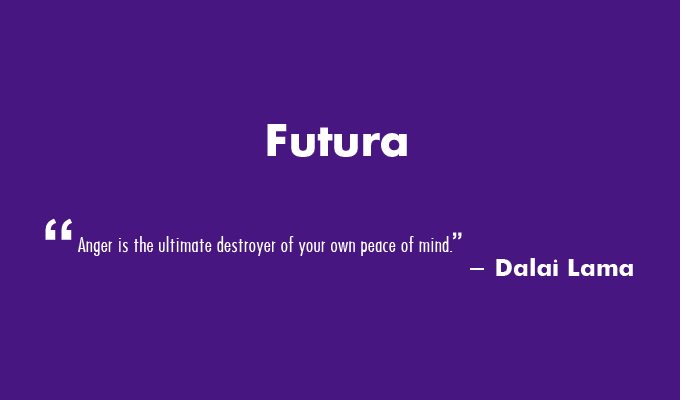
Futura is a classic sans-serif that’s widely beloved for its innovative design and easy legibility. True to its name, it has a futuristic look, but it’s also great for web content.
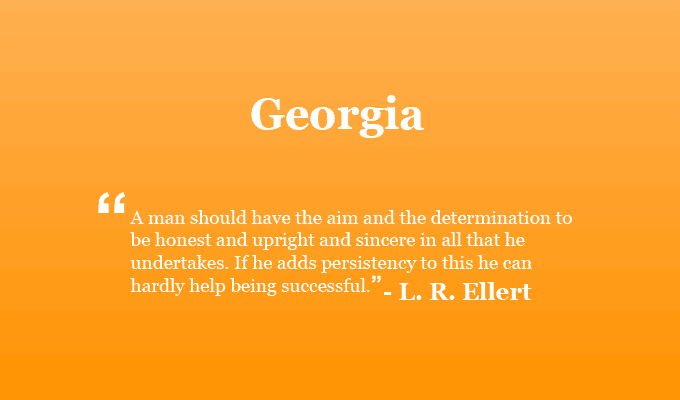
Georgia was actually designed for the Web, especially online documents that would be hard to read otherwise. Georgia remains legible even when reduced to a small font size.

Lato is a Google Font that’s designed for the web. This sans-serif has semi-rounded letters for a friendliness that also looks professional. Thanks to its distinctive yet unobtrusive letter shapes, it’s also highly legible.
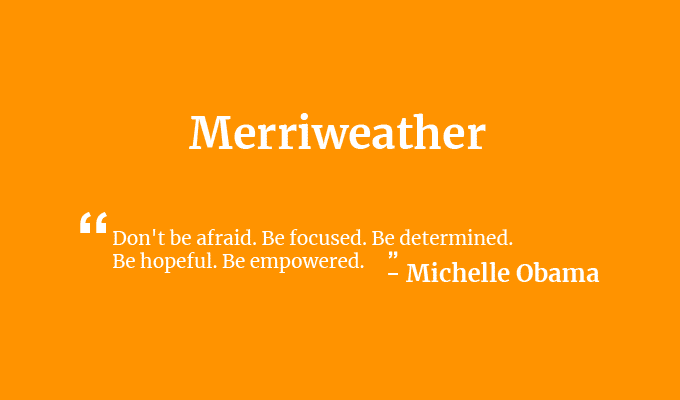
This serif typeface was designed to look good on digital documents. It is semi-condensed for an elegant look, yet remains legible at small font sizes.
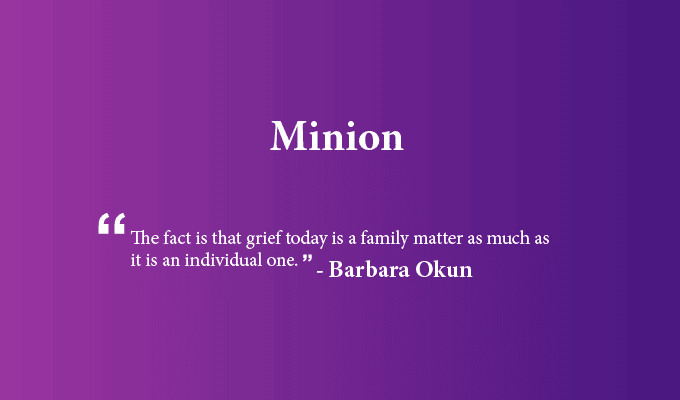
Minion Pro is a distinguished, classic-looking typeface, and indeed it’s an old-school design. Still, its elegance doesn’t detract from its high legibility and smooth rendering on digital devices.
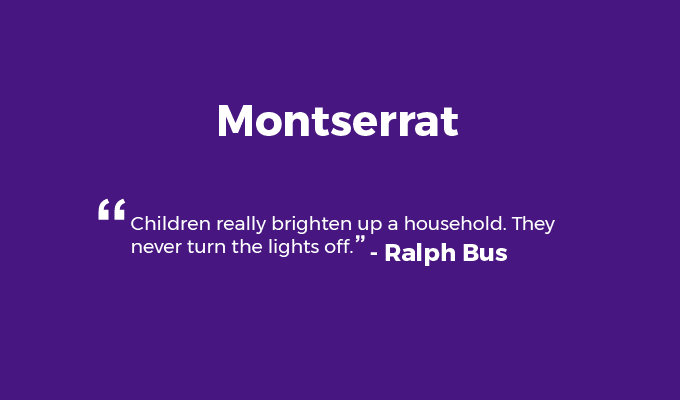
Montserrat is a geometric sans-serif typeface that has an open, friendly yet even and professional look. It’s commonly used as an alternative to the popular font Gotham.
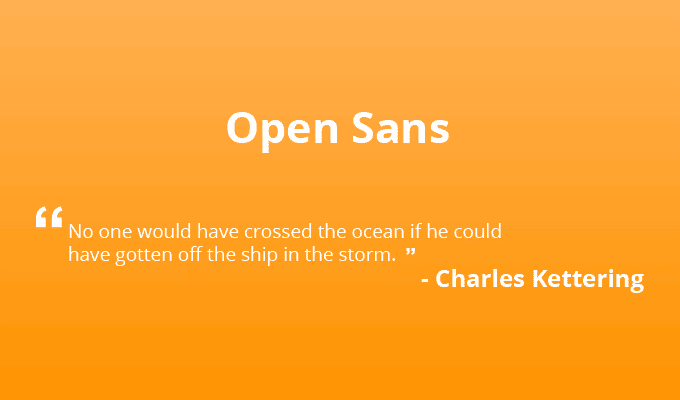
In case you haven’t noticed, a lot of these easy-to-read typefaces are sans serifs. Open Sans was designed by Steve Matteson of Ascender Corp to be an appealing sans serif to suit all designers’ preferences.
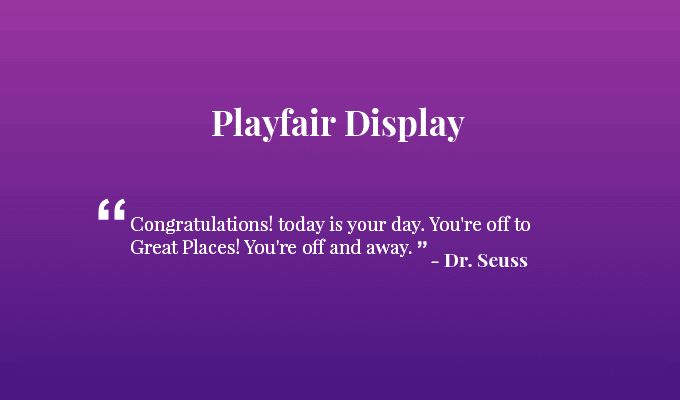
Playfair Display is an attractive serif typeface commonly used for titles and headings. Its tall x-heights and subtle serifs make it easy to read on the web. This open-source font is a great choice for websites that want a distinguished look.
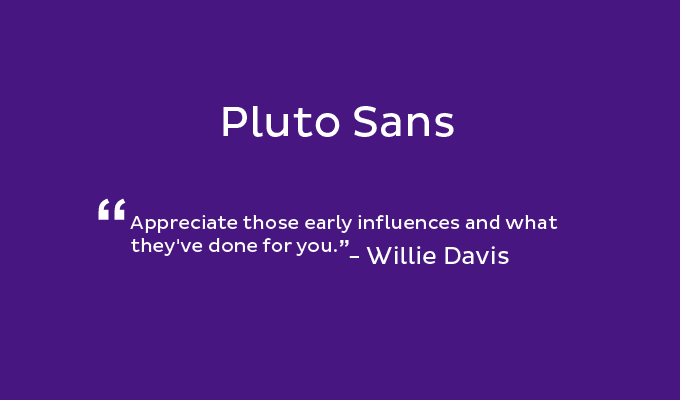
Pluto Sans is a geometric sans-serif designed by Hannes von Döhren in 2012. Its large x-height makes it excellent for rendering long texts, even on the web.
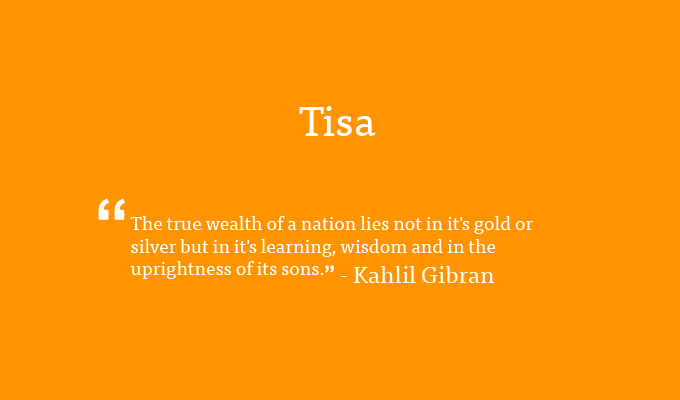
Tisa, designed by Mitja Miklav, looks great no matter where it’s rendered. Its large x-height and ample kerning and counters make it ultra-legible, and it’s a versatile font that looks good in a range of contexts.

This typeface is another one commissioned by the Microsoft Corporation. Designed by Vincent Connare, this sans-serif features tall x-heights and short cross-bars to aid legibility.
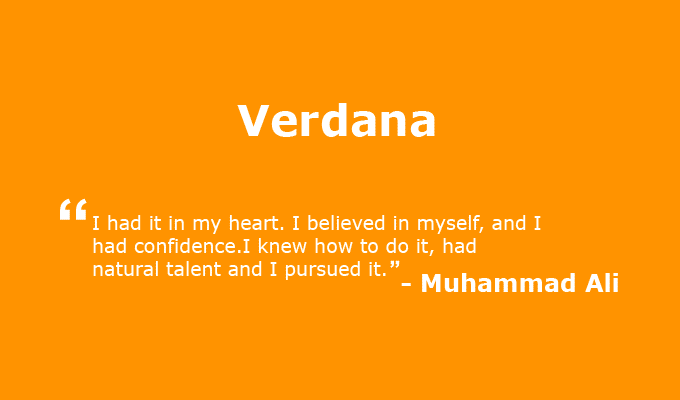
This sans-serif typeface is widely loved for its open counters and distinctive letter shapes, which avoid confusion of “n” with “h,” for example. Created by designer Matthew Carter for Microsoft Corporation, Verdana fonts read very well on websites and digital documents.
See Related: What Is A Lightbox?
Your website is your first line of communication with many of your customers. In addition to great content, you need a typeface that’s highly legible and lets your company’s message shine through. The best web designers know which fonts to choose to match your brand and make your website appealing to visitors.
If you're worried about your website's readability, drop us a line. We can help you figure out how to make your site easier for your audience to read and take action.
—
Thrive Design is a customer-centric web design agency from Seattle. Contact us today to find out how we can elevate your business online! You can find our reviews online at Clutch, UpCity, LinkedIn, and Facebook.
Category: Web design Seattle
Your website is not merely a piece of virtual real estate; it is a testament to your brand's essence, unique value proposition, and commitment to customers. A remarkable web design, the cornerstone of an effective digital marketing strategy, is your most potent tool to engage your audience, reinforce your brand, and drive business growth.
Understanding the strategic value of web design extends beyond appreciating aesthetically pleasing visuals. Beyond its physical beauty, the crux of robust web design lies in its ability to enhance the user experience, efficiently guide visitors' actions, and ultimately convert those visits into tangible business value.
A strategically designed website operates as a bridge between your business and potential customers, facilitating seamless interaction. The user experience on your website can make or break their decision to engage with your brand. It's here that meticulous planning comes into play, shaping user-friendly interfaces that resonate with your audience, from the simple navigation bar to a highly-interactive product gallery.
Web design plays a pivotal role in showcasing your brand's identity, its unique ethos, and what sets it apart from the crowd. Customized web design enables businesses to create a digital persona, a visual narrative that aligns with their core values and appeals to their target audience. Incorporating elements of your brand identity, like logo, typography, and color scheme, harmonizes your online presence and deepens your audience's emotional connection to your brand.
Another significant facet of web design's role in digital marketing is its influence on Search Engine Optimization (SEO). A well-designed website with clean code, fast loading times, a mobile-friendly layout, and well-structured content helps improve your site's visibility on search engines, driving more organic traffic.
Ultimately, the ultimate aim of your web design should be to facilitate conversions. Guiding visitors through their journey with clearly defined calls-to-action, easy navigation, and engaging content all turn casual visitors into paying customers. A well-designed website is an investment that pays dividends in increased customer engagement, loyalty, and business growth.
At Thrive Design, we leverage two decades of expertise to design websites that meet our clients' aesthetic and functional expectations and serve as powerful tools in their digital marketing strategy. Through our comprehensive approach to web design, we ensure your website not only looks the part but performs to exceed your business objectives. After all, your success is our success, and we commit to going the extra mile to bring your vision to life in the digital landscape.
Contact us to see how we can help your business.
Building your first WordPress site is like learning a new language. You've got your domain and picked WordPress as your go-to CMS, but now you're swimming in a sea of themes and templates. How do you choose?
When you first dive into the world of WordPress websites, it's easy to get overwhelmed with all of the choices available. But how do you know what to choose? Do you need a theme or a template? What even is the difference between the two?
There are many things to consider between a custom WordPress theme vs premium theme. Let us help answer those questions for you.

In simple terms, a WordPress theme is the backbone of your website. It determines your website's look and operation - from color schemes and typography to page layouts and margins. It even sets where the headers, footers, and sidebars will sit. Themes shape your website's personality, making it unique.
Those who know a little about code will find that a CSS stylesheet drives WordPress themes. This stylesheet affects your entire website. With a skilled web designer or developer, you can apply the stylesheet to specific parts of your site, giving you greater control. Your choice of WordPress theme is essentially a complete design package for your website. It's a one-stop shop for all your design needs, ensuring that everything from colors to fonts and layouts is consistent and cohesive.
Related Reading: How Much Does a WordPress Website Cost?

This is where it can get a bit tricky. In WordPress lingo, a template relates to specific pages on your site, not the whole design. So, while a theme covers your entire site, a template only works for certain pages.
Templates can help add custom parts to your site not covered by your theme. This could be blogs, landing pages, or other content unique to your site.
Your theme might come with templates included. For instance, you could have two different blog post templates, one full-width and one more narrow. This gives you extra ways to customize your site.
Some other elements of your site that you can customize through templates are:
Related Reading: What about hosting and maintenance once you have a website?
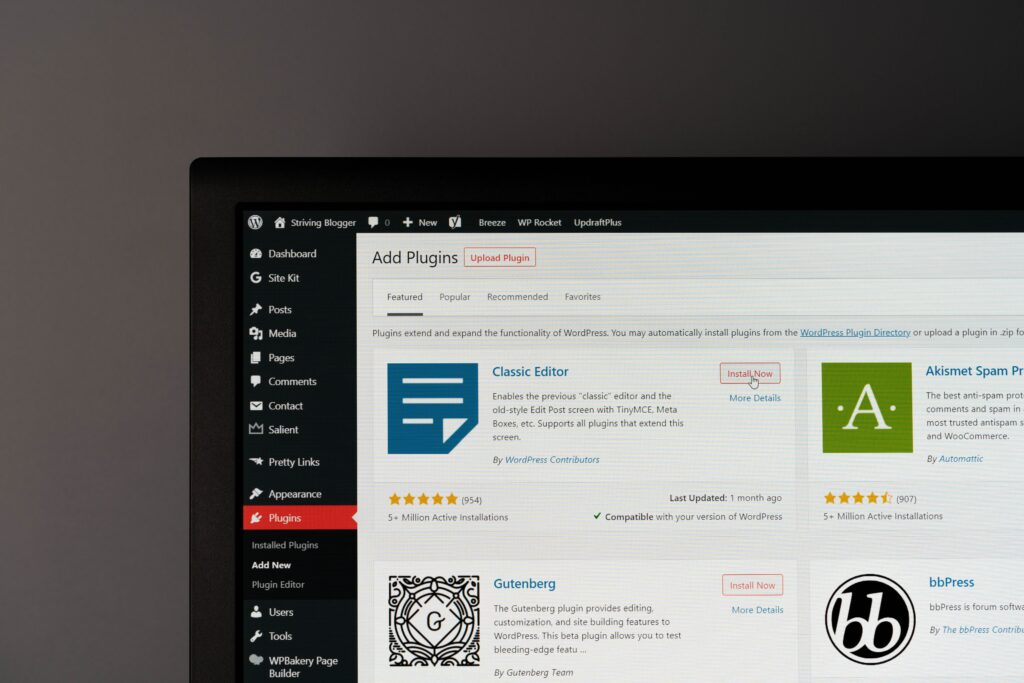
When you choose a theme, it often means committing to a predefined design. This can be great for beginners, but it can also be very limiting. Themes can restrict your design choices and make it challenging to expand or evolve your website's design as your business grows. For instance, if you want to add a new feature or functionality not supported by your theme, you could find yourself in a bind.
Choosing a theme is not a one-and-done process; it's a long-term commitment. You must be cautious about selecting a theme that will receive continued support and updates from its developers. Regular updates are crucial to ensure compatibility with WordPress's latest versions and maintain security standards. Without updates, your website might face compatibility issues or even become a target for hackers.
Statistics indicate that theme abandonment is a significant issue within the WordPress community. As per a survey by WordCamp in 2018, approximately 50% of the available themes in the WordPress repository hadn't been updated in over two years. This suggests that half of the themes could be abandoned, leaving users without support or updates.
A recent study by SOTW in 2022 found that only 60% of the top 1,000,000 sites using WordPress themes were operating on a fully updated theme. Many websites are vulnerable to security risks and compatibility issues due to outdated themes no longer supported by the original developer.
Therefore, before committing to a theme, it's essential to research its history. Check for regular updates, browse user reviews, and consider the reputation of the theme's developers. The success of your website could hinge on these factors. Making an informed choice can help ensure that your theme continues to support and enhance your website rather than becoming a roadblock to its progress.
In essence, the distinction between themes and templates boils down to scope. While themes provide an overarching design for your website, templates can customize individual pages. Each plays a crucial role in creating a dynamic and engaging WordPress website.
Yet, choosing a theme isn't without its challenges. Despite their convenience and simplicity, themes can potentially restrict your design flexibility and expansion potential. Furthermore, the risk of theme abandonment is real and can leave your website without critical updates and support. It's crucial to make an informed decision and choose a theme that suits your design vision and is backed by reliable, ongoing developer support.
Remember, if the right theme or template eludes you, expert designers and developers, such as our Thrive team, can help. Crafting a custom theme or design tailored to your business needs can make your website stand out. We'd love to learn more about your business and discuss how a well-designed and maintained website can play a pivotal role in your success story. Contact us to start the process.
Welcome to Thrive! We are passionate about creating websites that look fantastic and drive results. Today, we want to discuss good website design's vital role in business success.
Your website often serves as potential customers' first interaction with your brand. It's not just about attractive colors and images. A well-designed website communicates a simple yet powerful message - you care about your business, pay attention to details, and are trustworthy. In the business world, first impressions are everything, and your website is your chance to make a lasting one.
Good design goes beyond mere visuals; it focuses on the user experience. A well-structured, easy-to-navigate website encourages visitors to stay, explore, and ultimately engage with your content. Whether signing up for a newsletter, purchasing or contacting you for a service, a user-friendly design helps guide visitors to the desired action.
A website isn't just a digital platform; it's an ambassador of your brand. It should reflect your brand's personality, values, and goals. When your online presence is in harmony with your overall branding, it sends a consistent, clear message to your audience. This alignment helps build trust and fosters loyalty among your customers.
An often overlooked aspect of web design is its impact on search engine optimization (SEO). A well-designed website adheres to SEO best practices, making it easier for search engines to crawl and index your website. This visibility leads to higher rankings on search engine results pages, meaning your website is more likely to be discovered by potential customers.
In today's digital age, much web traffic comes from mobile devices. Therefore, a good website design must be mobile-responsive. This means it should automatically adjust to fit any device's screen size, providing a seamless experience for all users, regardless of how they access your site.
Here at Thrive, we're not just about making pretty websites. We follow a structured, process-driven approach to ensure we deliver exceptional results every time. From strategic planning and magnificent creation to fostering growth, we're committed to helping our clients reach new heights.
Let's chat about your vision. We're confident in our ability to deliver - and we think you'll be delighted with what we can achieve together.
First impressions are powerful. Within seconds of interacting with your business online, users form opinions about your brand's trustworthiness, professionalism, and legitimacy. These snap judgments are rooted in human psychology and our natural tendency to categorize new information. In today's digital world, where consumers are increasingly reliant on online interactions, ensuring a strong online presence through effective branding and web design is more important than ever.
Our brains are wired to make sense of the world quickly and efficiently. To achieve this, we rely on cognitive shortcuts called heuristics, which help us process information and make decisions faster. Heuristics often lead to the formation of judgments and stereotypes, which can be both helpful and harmful. In the context of online businesses, people tend to make snap judgments based on visual cues, such as website design, color schemes, and logos. These judgments can have a significant impact on whether potential customers trust and engage with your business.
The halo effect is a cognitive bias that influences our perception of someone or something based on one positive or negative trait. For example, if a website looks professional and visually appealing, users are more likely to perceive the business as trustworthy, competent, and legitimate. This effect highlights the importance of investing in high-quality web design, as it can significantly impact users' perceptions of your business and their willingness to engage with your products or services.
Branding is more than just a logo or a tagline; it's the emotional and psychological relationship between a company and its customers. A strong brand helps create trust, recognition, and loyalty – all crucial components for a successful business.
Consistent branding helps create a cohesive image and identity for your business. When people see the same logo, colors, fonts, and messaging across different channels, they start to recognize and trust your brand. Consistency also helps convey professionalism and legitimacy, as it demonstrates that your business has invested time and effort into establishing a clear identity.
Your brand's story is a powerful tool for connecting with customers on an emotional level. By sharing your mission, vision, and values, you help humanize your brand and create a narrative that people can relate to. A well-crafted brand story can evoke emotions and create a sense of trust and loyalty, ultimately influencing users' decisions to engage with your business.
A well-designed website is crucial for establishing trust and legitimacy in the digital age. It's often the first point of contact between a potential customer and your business, so it's vital to make a strong impression.
User experience (UX) is a critical aspect of web design that encompasses how users interact with your website. A positive UX means that your site is easy to navigate, loads quickly, and is optimized for both desktop and mobile devices. A poor UX can lead to frustration and distrust, causing potential customers to leave your site and never return.
The visual appeal of your website plays a significant role in how people perceive your brand. A professional, aesthetically pleasing design instills confidence in users and increases your business's credibility. Conversely, a poorly designed or outdated website can create skepticism and doubt, making users question your brand's legitimacy.
The content on your website should be clear, concise, and easy to understand. This helps users quickly find the information they're looking for and demonstrates that your
business is transparent and reliable. Providing accurate, relevant, and engaging content not only informs potential customers about your products or services but also helps build trust and credibility.
To ensure that your online presence sends the right message to potential customers, consider implementing the following strategies:
Humans are wired to judge and categorize information quickly, and this tendency extends to the online world as well. As a business owner, it's crucial to understand the psychological mechanisms behind these snap judgments and invest in high-quality branding and web design to ensure that potential customers perceive your brand as trustworthy, professional, and legitimate. By doing so, you'll create a strong online presence that effectively attracts and engages your target audience, ultimately driving growth and success for your business.
If you would like help with your online presence, let's talk.
Today I have an exciting challenge for you. This quick exercise aims to help you understand how potential clients perceive your business and one of your competitors when searching online. By the end of this challenge, you'll have valuable insights into your online presence and learn how to make improvements to stand out in the crowd.
First, let's imagine you're a potential client who has been referred to two companies – your company and a well-known competitor. Grab a notepad and put yourself in their shoes as you Google both company names in an incognito browser: "Your Company Name" and "Your Competitors Full Company Name."
Take a close look at the search results on the first page. Do any reviews show up? What does the text say about each company? Jot down your first impressions and feelings about each company based solely on the search results.
Next, visit each website and spend about 15 seconds looking at the homepage. Remember, you're still in the persona of the potential client. As you explore, ask yourself these three questions:
Once you've completed this exercise, compare your notes for both companies. How did your business stack up against your main competitor? Did your website clearly convey your services and expertise within those first 15 seconds? Were your online reviews and search results as impressive as your competitor's?
By stepping into the shoes of a potential client and comparing your online presence to a competitor, you can gain valuable insights into areas where you may need to improve, helping you create a stronger online presence and win more business. Good luck with the challenge, and remember to keep refining your website and online reputation to stand out from the competition!
If your brand and/or website isn't properly positioning your company and you' like some help let's talk.
Even if your business is entirely built on referrals, having a professional website remains crucial for your business. In this blog post, we will explore the importance of investing in a professional online presence and having robust online reviews.
When potential clients receive a referral, their first instinct is often to research your business online before reaching out. When they Google your company name they need to see a professional website that establishes your credibility and showcases your expertise. Your website should reinforce the trust that the referrer has placed in your business. Additionally, solid online reviews serve as social proof and can further strengthen that trust, making potential clients more likely to choose your services.
A well-designed website with Search Engine Optimization boosts your online visibility, making it easier for referred clients to find you. Even if referrals are your primary source of business, enhancing your online presence ensures that potential clients can quickly locate your website and access the information they need to make an informed decision. How awkward would it be for a referred prospect to google your company and not be able to find you? If you aren't in the top 3 listings your credibility will be affected by the searcher, even subconsciously.
A professional website enables you to display your services, portfolio, and accomplishments in a visually appealing and easily accessible format. This gives potential clients a better understanding of what you can offer them and demonstrates your expertise in your field, further establishing your credibility. Anyone can say that they do a great job, but showing it with a case study makes your service all the more appealing. People need to see themselves in your service and case studies. Don't skimp on this!
With the increasing reliance on digital marketing, not having a professional website and online reviews may put your business at a competitive disadvantage. Your competitors most likely are using their online presence to attract more clients, and having a strong online presence can help you keep up with, or even surpass, the competition. If you look like the smallest kid on the block how likely are you going to be picked when it comes to the big game? Time to hit the proverbial gym 🙂
While your business may be referral-based, having a professional website can help you tap into new markets and expand your reach. As your online presence grows, you may attract clients from outside your referral network, further bolstering your business's growth potential. Referrals can max out and you may one day want to expand beyond your current network.
Your clients expect that you'll have an online presence, including a website and online reviews. Failing to meet these expectations can lead to missed opportunities, as potential clients may view your business as outdated or less trustworthy. This may not be the case if you are an old-timey wood carver who sells one of a kind garden gnomes but most people live in a digital age. Let's meet them where they are at.
A professional website offers opportunities for clients to engage with your business through various channels, such as contact forms, live chat, or email sign-ups. This increased engagement can help you build stronger relationships with clients and create opportunities for upselling or cross-selling your services. A contact made today could do business with you in several years time. Start the conversation now.
In summary, a professional website and strong online reviews are essential for businesses, even if they are entirely referral-based. These elements help establish credibility, trust, and visibility while showcasing your expertise and maintaining a competitive edge in the market. Investing in your online presence can lead to new opportunities and help your business grow in the long run. At Thrive, we understand the importance of a strong online presence for referral-based businesses and are committed to helping you succeed.
Contact us today to learn more about our website design and digital marketing services tailored to your unique needs.
At Thrive Design, we believe in quality over quantity. We've focused on assembling a crack team of digital professionals to ensure we deliver outstanding results for every client. With the remote nature of our role, we've been able to go beyond Seattle to find the right people, no matter where they're located.
With that said, it’s an honor to announce that Thrive Design was recognized as one of the 2022 leaders on Clutch’s Top 1000 Global Companies list and one of the top web designers in Seattle, Washington. For context, Clutch is a B2B ratings and reviews platform based in Washington, DC. They evaluate technology service and solutions companies based on the quality of work, thought leadership, and client reviews.
Companies must exhibit an unusually high ability to deliver top-tier work to their clients to qualify for this award. This award is only granted to the highest-performing B2B companies, so we’re incredibly gracious that Clutch has recognized our merit and top-tier work.
“Clutch has been a great source of leads for our agency, and their review/interview process is amazing.” – Noah Britton, CEO, Thrive Design
Words could not express how thankful we are to our clients. Without them, we couldn’t have won this award, and we are incredibly grateful to those who took the time out of their busy day to leave us a review on our Clutch profile. Here’s what they had to say about working with us:
“Our original mistake was hiring a marketing company targeted to our industry. However, they weren’t good web developers. On the other hand, we’re happy with Thrive Design because they know what they’re doing. Their team is great.” – Katherine Dee, Founder, Glow Medispa
Let's chat if you believe in what you do, have a proven offer, and would like to increase your online presence and authority.
As a small business owner, you know that branding is important. But what does that mean for your business, and how can you make sure that your branding is effective? In answering these questions, we'll discuss some of the basics of branding and give you tips on how to create an effective brand strategy for your small business. We'll also talk about the different elements of branding and how they work together to create a cohesive brand identity.
So whether you're just starting out or you're looking to refresh your existing brand, read on for some helpful tips.
First things first: let's define what we mean by "branding." Branding is the process of creating and maintaining a distinctive image or identity for your business. This includes everything from your company name and logo to your website design and the way you interact with customers.
Why is branding important? Because it's one of the most important ways to differentiate your business in a crowded marketplace.
Think about it this way: if you're selling shoes, there are probably hundreds of other businesses doing the same thing. How do you make sure that potential customers choose your shoes over all the others? Branding can help. A strong brand can make you more recognizable, more trustworthy, and more memorable than your competition. And that means more sales for your business.
Now that we've talked about what branding is and why it's important, let's talk about how you can create an effective brand strategy for your small business. There are a few key elements to any successful brand strategy:
Branding is more than just a logo or a color scheme. It's the sum of all the ways you present your business to the world. That includes everything from your company name and tagline to your website design, social media presence, and even the way you answer customer phone calls.
When you're creating your brand strategy, it's important to think about all of the different elements of branding and how they work together to create a cohesive whole. Here are a few of the most important elements to consider:
Once you've defined your target audience, developed your unique selling proposition, and created a brand strategy, it's time to start putting all the pieces together. That's where branding comes in. Branding is the process of creating a cohesive visual identity for your business that reflects your values and mission.
There are a few key elements to any successful branding effort:
The most important thing to remember about branding is that it's not a one-time effort. Branding is an ongoing process that should be continually tweaked and updated as your business grows and changes. The best way to measure the success of your branding efforts is to track how well your target customers know and understand your brand.
Here are a few questions you can ask yourself to gauge brand awareness:
If you're not seeing the results you want, don't be afraid to make changes to your branding strategy.
Branding is an important part of any business, but it can be especially challenging for small businesses. With limited resources and a lot of competition, how can you make sure your small business stands out from the crowd?
The good news is that there are plenty of branding strategies you can use to make your small business more visible, trustworthy, and memorable. By taking the time to develop a strong brand identity, you'll be able to set yourself apart from the competition and build a loyal following of customers.
For small business branding support, don't hesitate to get in touch with our team at Thrive Design.
If you're a business owner, you know that a website is essential for your success. But what if you don't know how to design one? The good news is that with WordPress, it’s easier than ever to design and launch a website that checks all the right boxes.
Keep reading as we explore how you can use this platform to create a website that's perfect for your business - we'll cover everything from choosing a template to adding widgets and plugins.
This is one of the most important steps in creating your website. The template will determine the overall look and feel of your site, so it's important to choose one that fits your brand.
Once you've found a template you like, it's time to start adding content to your site. If you're not a web designer, don't worry – WordPress makes it easy to create beautiful pages without any coding knowledge. Just add your text, images, and videos, and let WordPress do the rest!
If you want to take your website to the next level, there are some great plugins and widgets available. These can add features like contact forms, social media integration, and e-commerce functionality.
Adding plugins is easy – just head to the plugin section of your WordPress dashboard and search for the ones you want to install. Once they're installed, you can activate them with a single click. And if you ever need to remove a plugin, you can do so just as easily.
Widgets are a bit different – they're small pieces of code that you can add to your website to display content in specific areas. For example, you could add a widget to your sidebar that displays your latest blog posts.
To add widgets to your site, head to the Appearance > Widgets section of your WordPress dashboard. Here, you'll see a list of all the available widgets. Just drag and drop the ones you want to use into the sidebar, footer, or other areas of your site.
Once you've added all your content and plugins, you might want to make some changes to the overall look of your website. WordPress makes it easy to customize your site without touching a single line of code.
In the Appearance > Customize section of your dashboard, you'll find all the options you need to change things like your site's colors, fonts, and header image. Just click on the element you want to change and make your adjustments – it's that simple!
If you're feeling really adventurous, you can even add custom CSS to further customize your site. CSS is a coding language that allows you to create complex designs with just a few lines of code. Don't worry – if this sounds intimidating, there are plenty of resources available to help you get started.
In today's world, it's essential to have a mobile-friendly website. More and more people are using their smartphones and tablets to browse the web, so if your site isn't optimized for mobile devices, you're missing out on a lot of potential traffic.
Fortunately, WordPress makes it easy to create a responsive website – one that looks great on all devices. Just head to the Appearance > Mobile View section of your dashboard and select the options you want. For example, you can choose to show or hide certain elements on your mobile site, or change the layout of your pages.
If you want to take things a step further, you can install a plugin like WPtouch that will give your site an entirely new look and feel on mobile devices.
SEO is the process of making your website more visible in search engines like Google. Today, there are a lot of factors that go into SEO, but one of the most important is choosing the right keywords. Keywords are the words and phrases people use when they're searching for something on the web.
You can add keywords to your website in a number of ways. One is to simply include them in your content – just make sure to use them sparingly and don't stuff them in where they don't belong.
Another way to add keywords is to use WordPress tags. Tags are like labels that you can add to your posts and pages. They help search engines understand what your content is about and make it easier for people to find your site.
You can add tags to your content by going to the Tags section of your WordPress dashboard and entering the keywords you want to use.
One of the best things about WordPress is that it's extremely versatile. You can use it to create simple blog posts or complex pages with multiple sections.
To add new content to your site, head to the Posts > Add New section of your dashboard. Here, you'll be able to enter the title and body of your post or page.
You can also add images, videos, and other media to your content. Just click on the "Add Media" button and you'll be able to upload files from your computer or select them from WordPress' media library.
Once you're happy with your content, just hit the "Publish" button and it will go live on your site.
No one likes a slow website. Not only is it frustrating for visitors, but it can also hurt your SEO. Fortunately, there are a few simple things you can do to speed up your site.
First, make sure you're using a good hosting provider. A good host will have servers that are optimized for WordPress websites and can handle high amounts of traffic.
Second, install a caching plugin like WPRocket or WPFastestCache. Caching plugins create temporary files that load faster than dynamic files, which means your pages will load faster for visitors.
Finally, optimize your images before uploading them to your site. Images are often the biggest culprit when it comes to slow loading times, so reducing their file size can make a big difference.
There are a number of ways to do this, but one of the easiest is to install the Smush plugin. Once you've installed and activated the plugin, simply go to the Media > Bulk Smush section of your dashboard and select all the images you want to optimize. The plugin will take care of the rest!
And that's it! You're ready to start sharing your website with the world. These are just a few of the ways you can use WordPress to design websites. With a little time and effort, you can create a beautiful site that looks exactly the way you want it to.
If you're looking for professional WordPress support, on the other hand, get in touch with our team at Thrive Design today.
Web design is a big investment. You’re committing to building a website that will be the foundation of your online presence – and you want it to look good, perform well and be easy to manage. Read on to take a look at some of the pros and cons of WordPress web design services and get an idea of whether it’s the right choice for your business.
If you're on the fence about investing in a solid website design, here are the perks of going in this direction.
While investing in WordPress is generally a very easy and straightforward decision, there are a few things to think through if you're thinking of working with professionals to get your website up and running.
If you want a professional website that’s easy to use and maintain, WordPress is a great option. However, it’s important to be aware of the potential costs involved before making a decision. Weigh up the pros and cons carefully, and make sure you have a clear understanding of your website’s requirements before taking the plunge.
Going all in can be resource-intensive if you want a professional job done. So if you want to work with a specialist, here are some things to think about.
Today, a powerful business website is no longer a luxury – it’s a necessity. WordPress web design is a solid investment that will give you the website you need to succeed. When done right, these websites are easy to use, maintain, and update. They’re also fast, responsive, and SEO friendly.
So if you're thinking about investing in this, weigh up the pros and cons carefully to ensure it's the right decision for your business. It's also significantly less stressful for you and your teams when you leave your vision in the hands of professionals.
At Thrive Design, web design is one of the things we do best. If you're curious about how we can help you create a stunning and responsive website that resonates with your values and audiences, get in touch with us today.